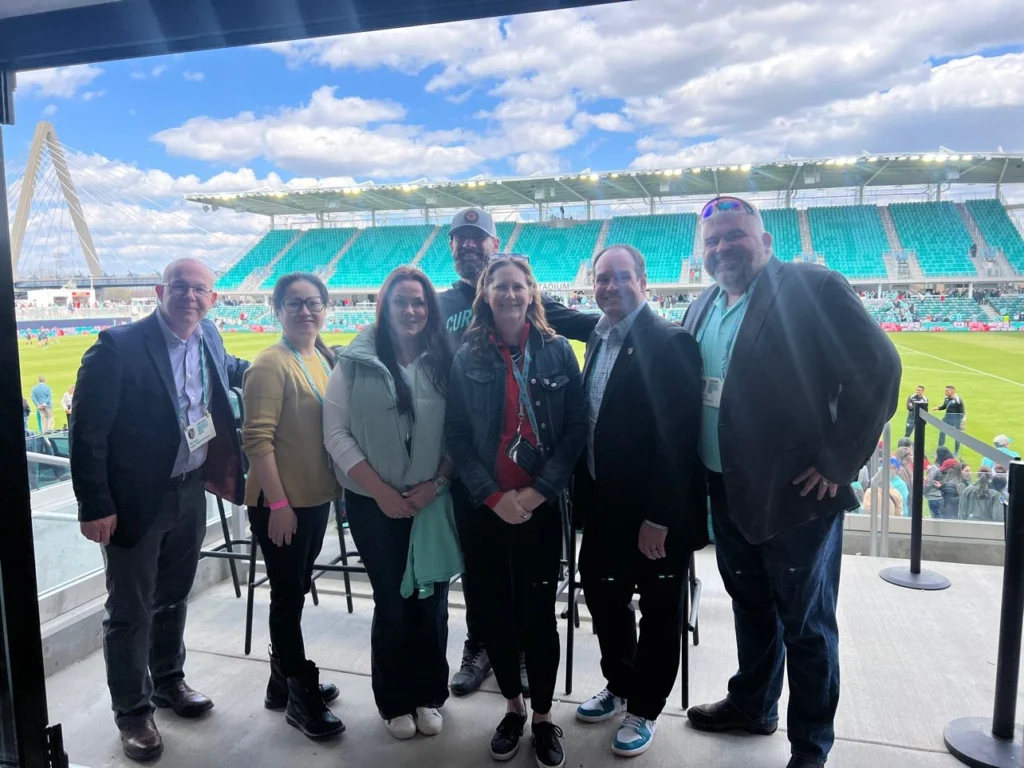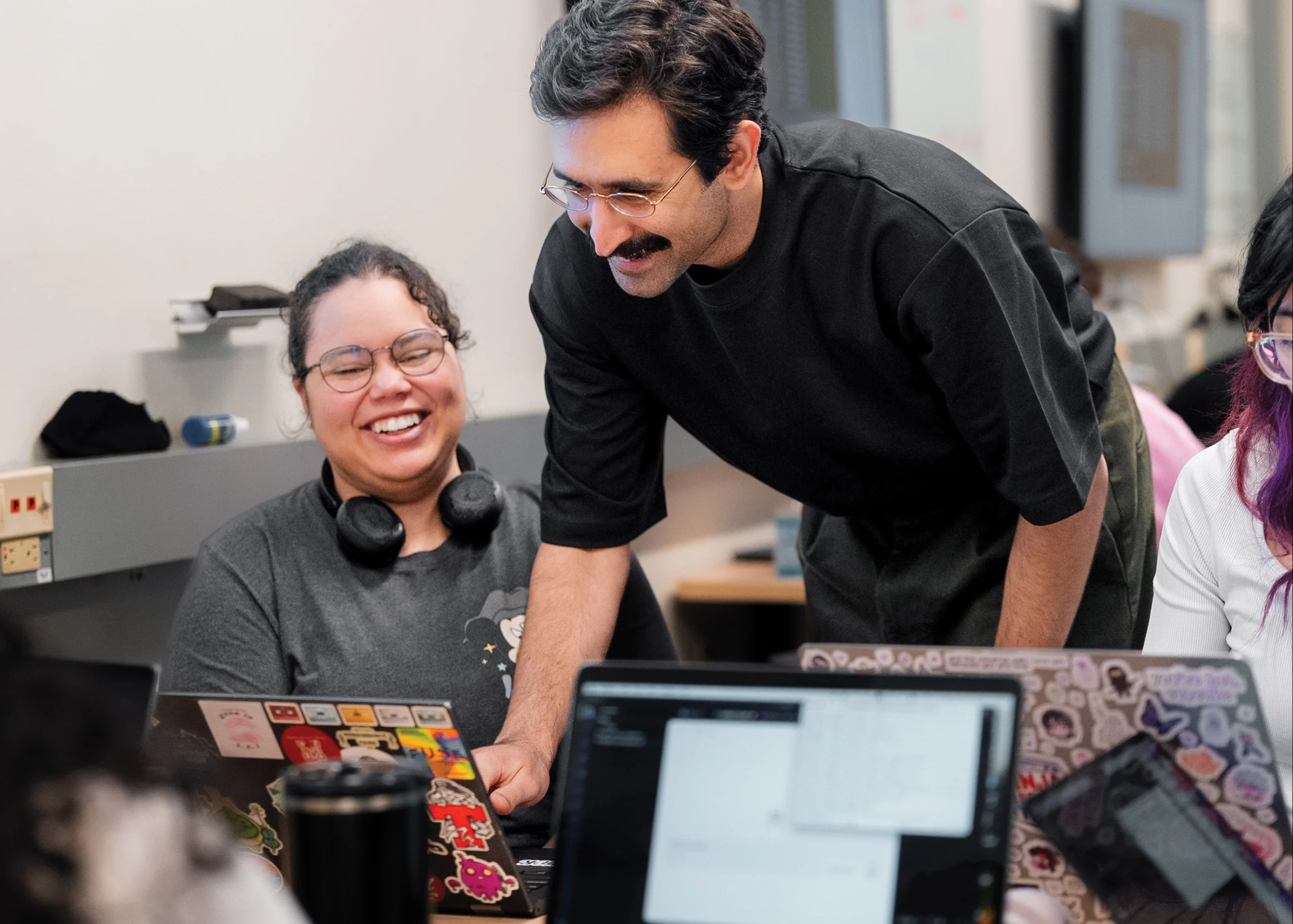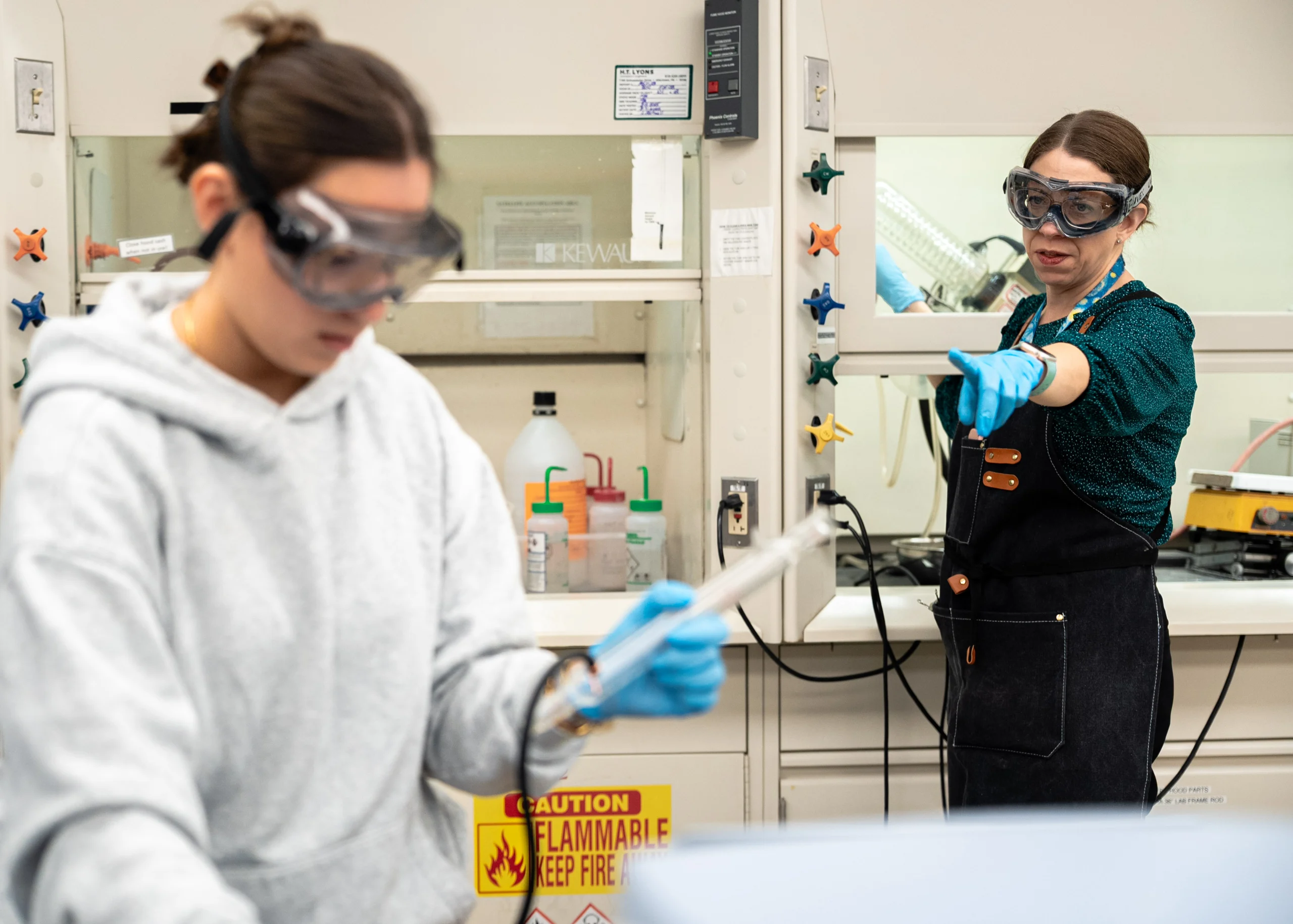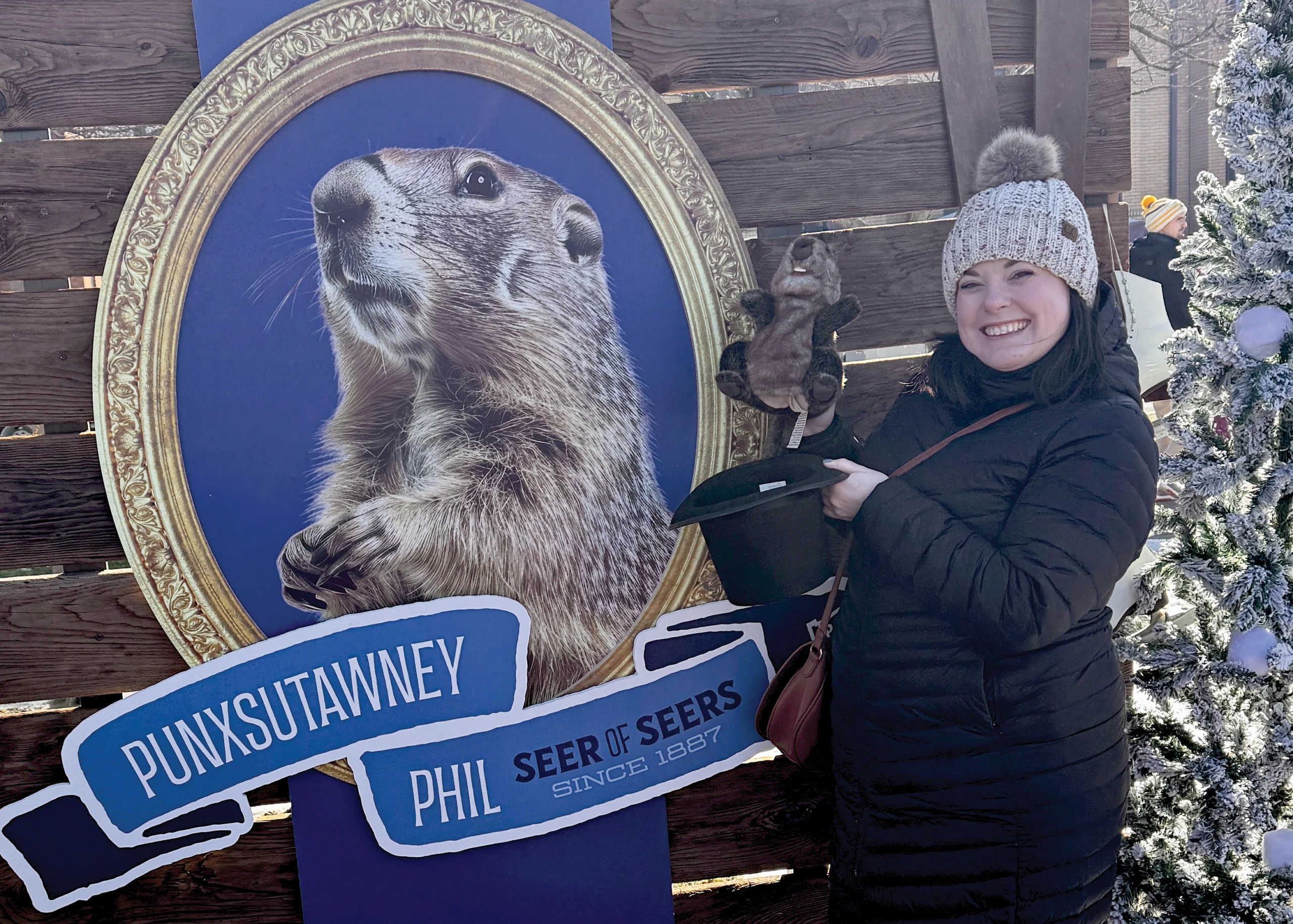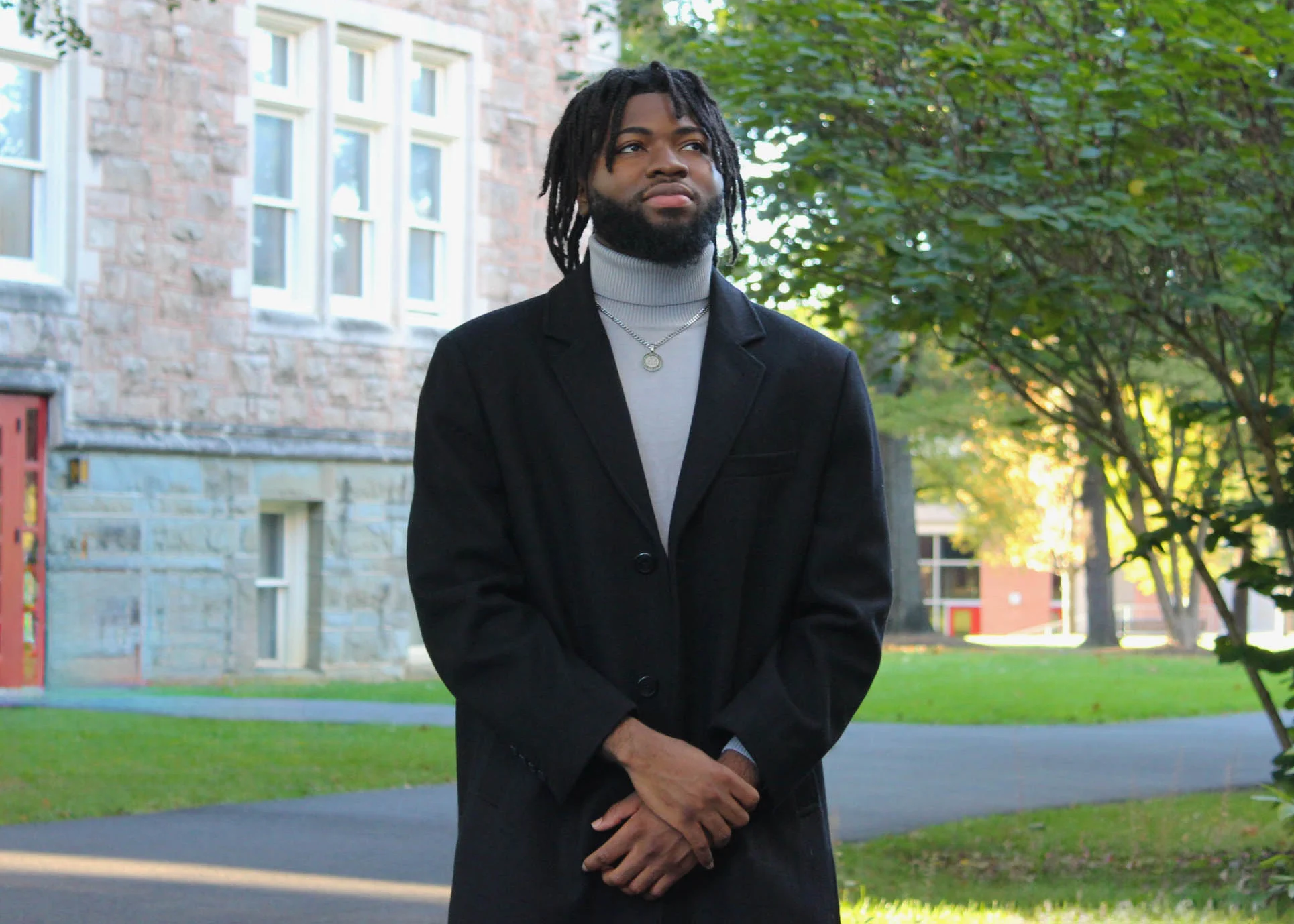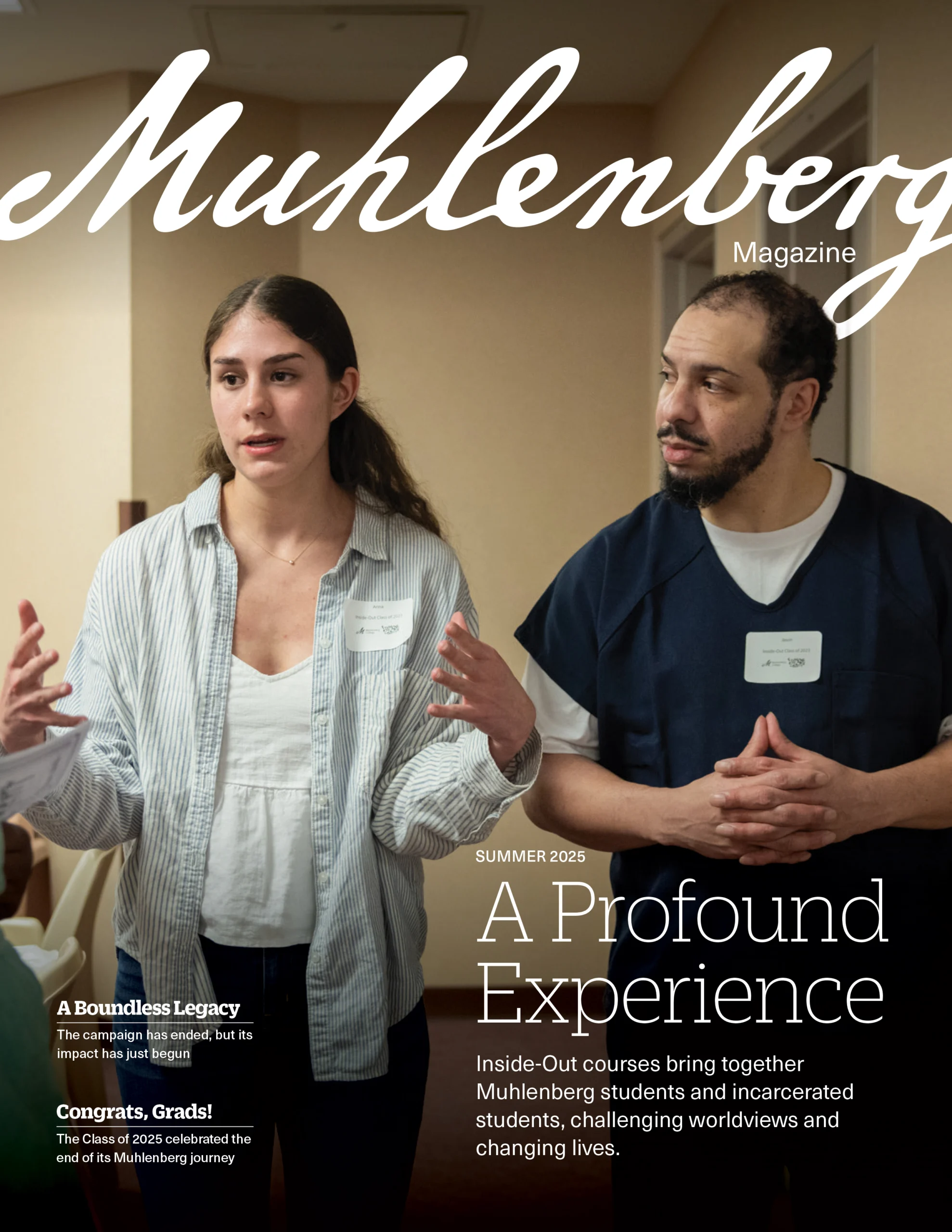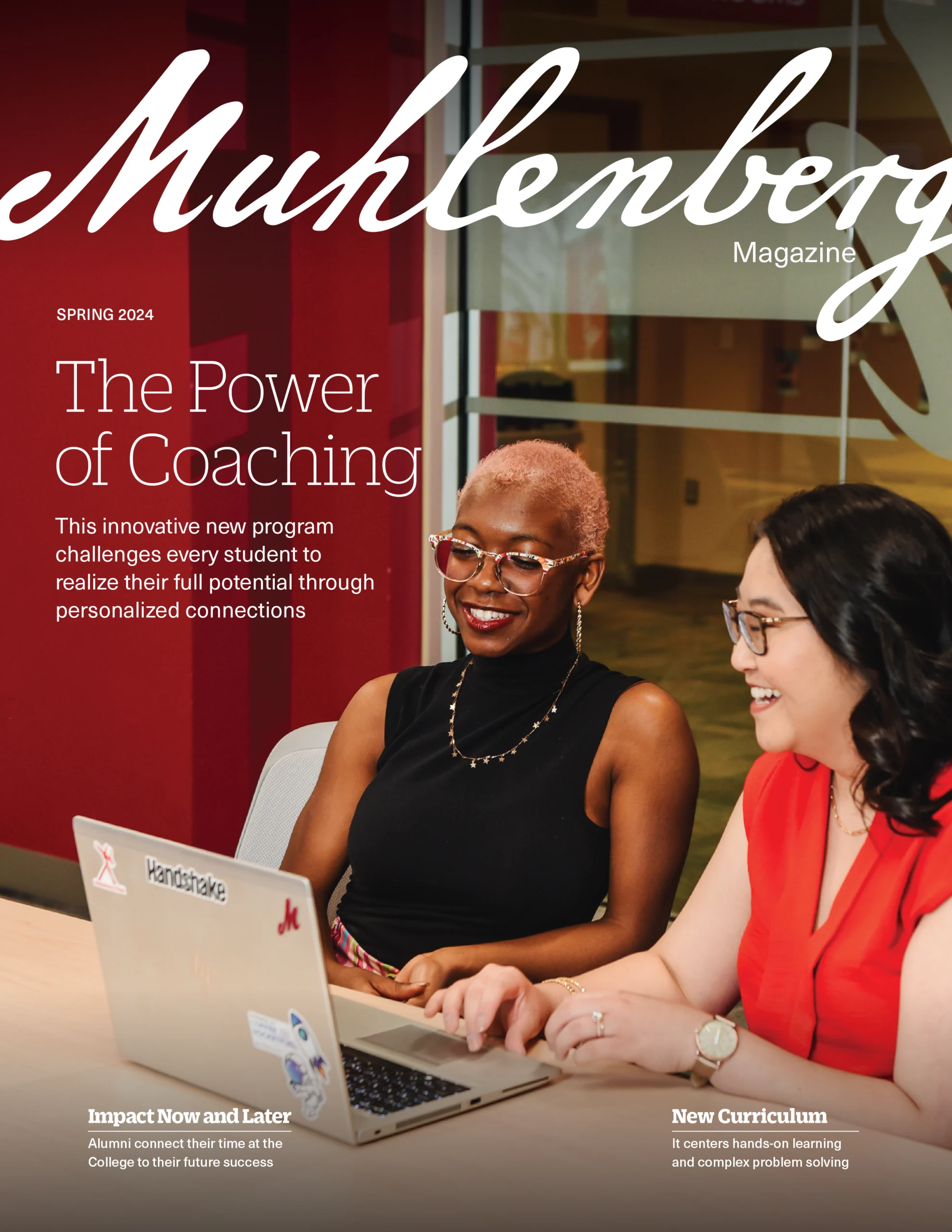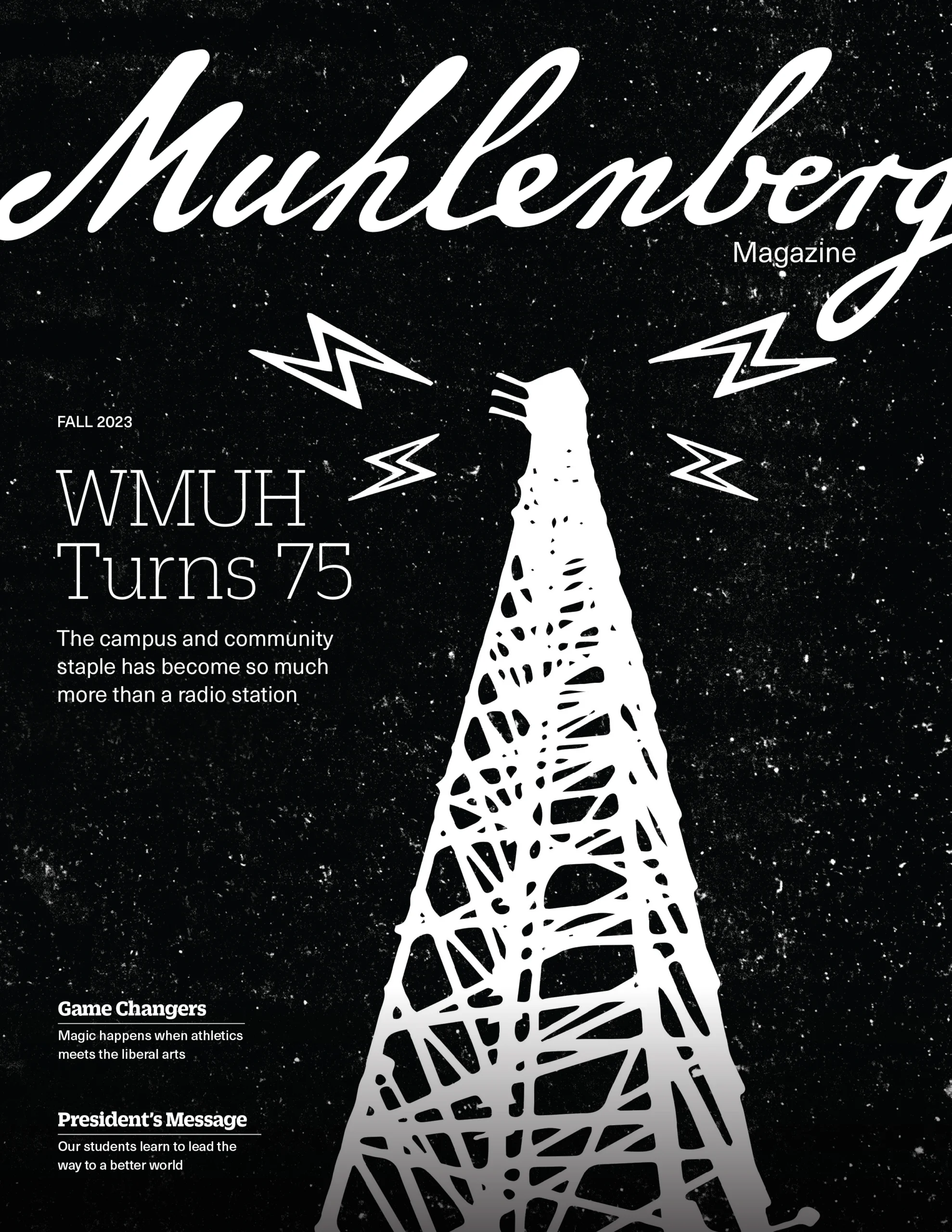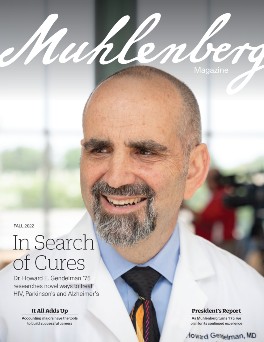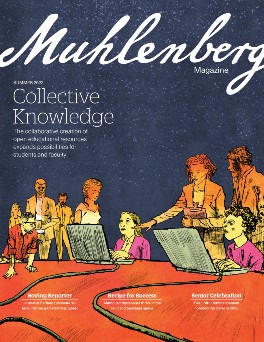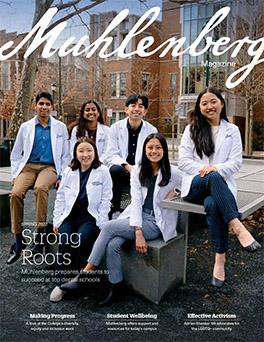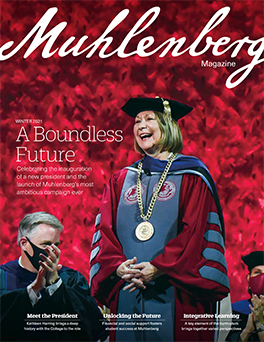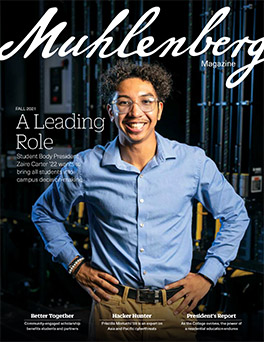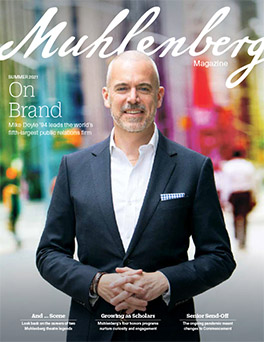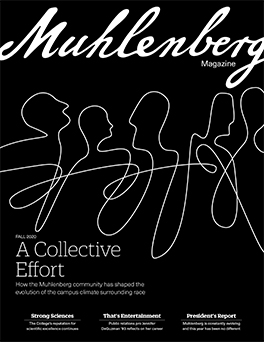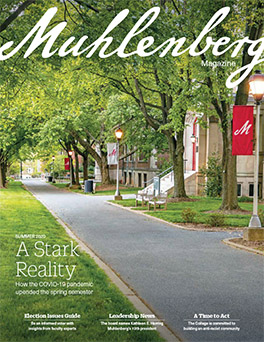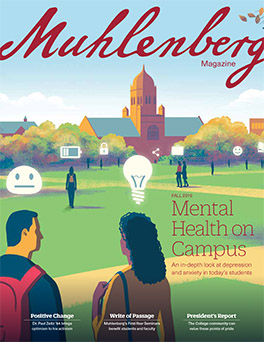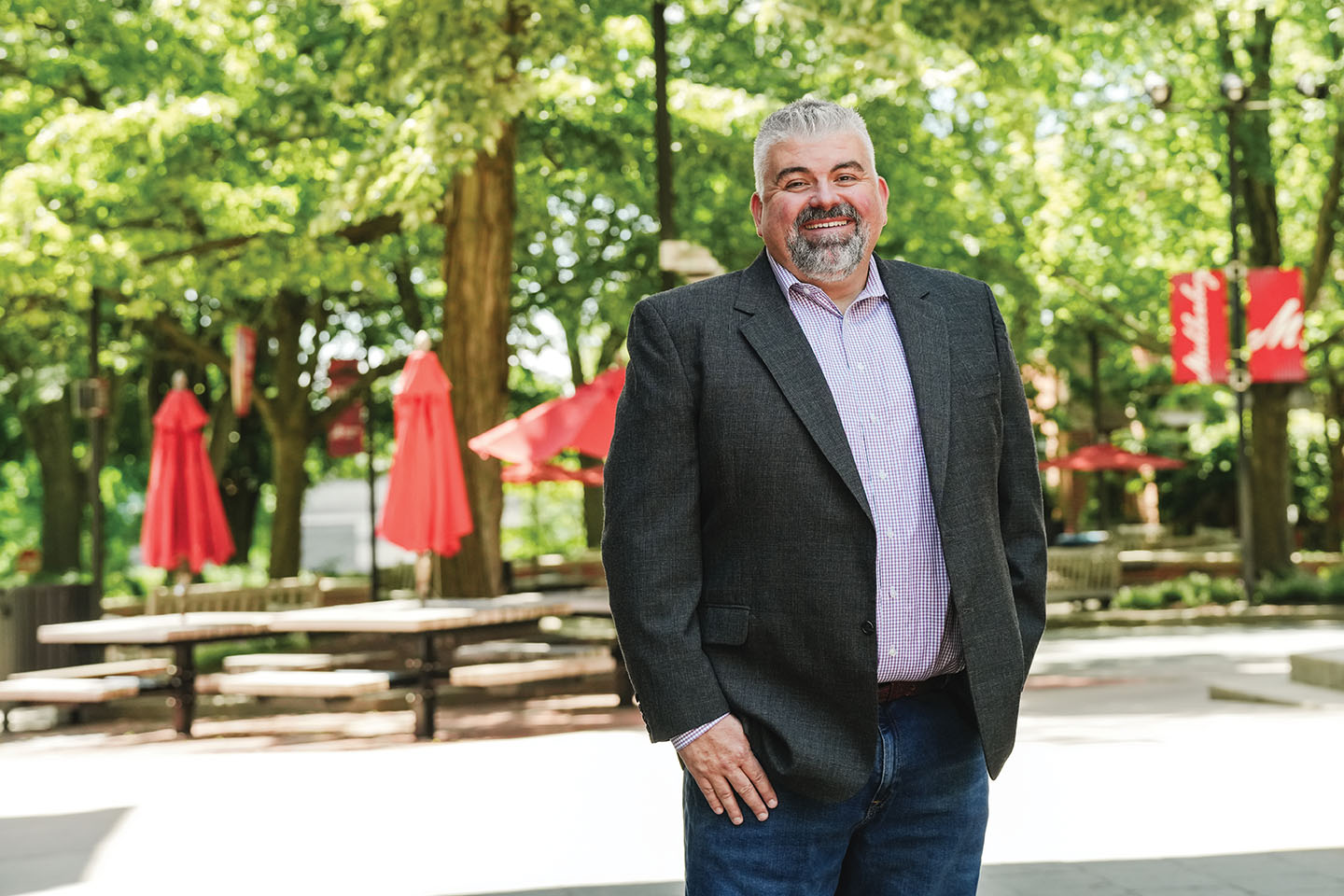
Patrick Gibbons ’11 Is a Fan of His Work
Gibbons, who oversees the installation of technology in some of the nation’s newest collegiate and professional stadiums, wants to stay in sports for the rest of his career.
When Patrick Gibbons ’11 visits Muhlenberg to speak to business students, he tells them that there are three kinds of people in the world: Those who can work in sports, those who can’t work in sports and those who have to work in sports.
“I happen to be the latter,” says Gibbons, who is senior vice president of technology at Legends, a company that builds and enhances sports and entertainment venues. “I’m never leaving sports again. For me, it really is a true case of, if you do what you love, you never work a day in your life.”
Gibbons found early success in his career, in the 1990s and early 2000s, even without a college degree: “I had gone to college right out of high school and I was just terrible at it,” he says. “I wasn’t ready for the next level of education.” Still, the self-described “sports nut” worked for Major League Baseball as a systems analyst and held tech roles at KPMG, Doosan Infracore and Ingersoll Rand. There, he was told that, without a college degree, he’d be unable to advance. He took advantage of Ingersoll Rand’s tuition reimbursement program and enrolled as an adult student at Muhlenberg, through what’s now known as the School of Continuing Studies, to pursue a business administration degree.
“It was really amazing, because at that point, I was still in that mode where I was like, ‘I really don’t need this, but I’m just doing it because somebody told me I had to,’” says Gibbons, who recalls that faculty with ongoing business experience, like small business owner and adjunct professor Joe Kornfeind, quickly changed his mind. “Everything they had to say was meaningful, and I could relate it to my work life. That was a totally different thing for me. Back in the day when I was [first] in college, it was like, ‘What do I need this for?’ That was a really great thing, to be able to immediately apply what I was learning to my actual work life.”
In 2011, he found his way back to Major League Baseball through his old boss, eventually becoming the league’s director of IT operations. When that boss became chief information officer of Legends, he recruited Gibbons to join the team: “It’s a very important lesson, to keep relationships strong,” Gibbons says. “There are probably only one or two jobs in my career that I’ve gotten from a traditional source. The rest have been word-of-mouth.”
““Everything they had to say was meaningful, and I could relate it to my work life. That was a totally different thing for me. Back in the day when I was [first] in college, it was like, ‘What do I need this for?’ That was a really great thing, to be able to immediately apply what I was learning to my actual work life.”
For his role with Legends, Gibbons spends about 100 nights per year in hotels near the sites of the stadiums the company is working on. Right now, he’s splitting his travel time between Buffalo, New York (working on the new Bills stadium), and Lawrence, Kansas (working on a renovation of the University of Kansas football stadium and historic basketball arena). His job is to plan and oversee the installation of all technology in these buildings, from scoreboards to Wi-Fi to security systems. A challenge is that installation can’t begin until the building is largely finished, so Gibbons and his team often have limited time to complete their work.
The most recent project Gibbons finished with Legends was CPKC Stadium, home of
the National Women’s Soccer League (NWSL) team the Kansas City Current. The 11,500-seat venue, which opened to the public in March, was the first in the world ever built specifically for a women’s professional sports team.
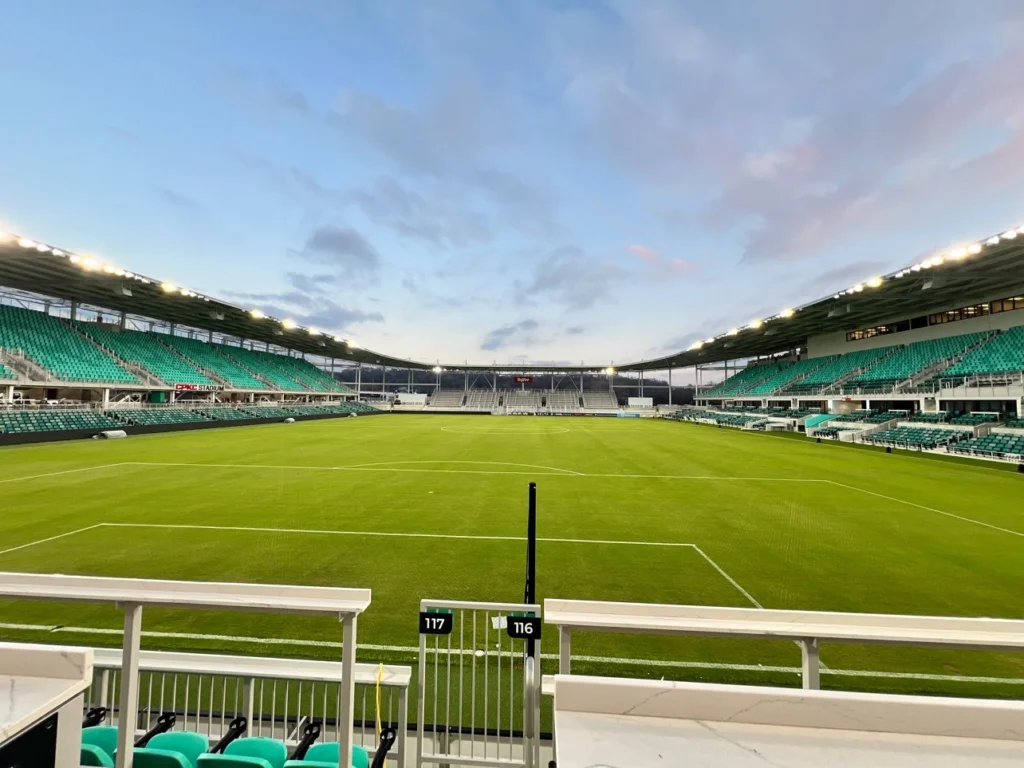
“When you get to be the first to do anything, it’s kind of a cool thing. Also, having a daughter who plays sports, it was even just a notch more important in my eyes,” Gibbons says. “It’s an interesting stadium because the seats are right up against the pitch. It’s extraordinarily intimate. You’re right on top of the action. The fan energy is unmatched. There’s a great sound system in it with a canopy that holds sound in. It’s quite a building to be the opposing team in.”
Looking ahead, Gibbons hopes to work on the two planned NWSL stadiums in both
Boston and San Francisco and will move into the installation phases in Buffalo and Lawrence. The frequent travel, the compressed schedules and the nonstop progression of projects are all worth it for this superfan who never wants to work in a different field again.
“I get to look at a sports building and say, ‘That’s ours. Our team did that. I was a part of that,’” he says. “We’re delighting fans and we’re trying to make the fan experience better at every stadium. When you see a young kid walk in, just wide-eyed, and see a giant scoreboard with a bunch of cool stuff and he’s just blown away by it, it could actually bring me to tears.”
